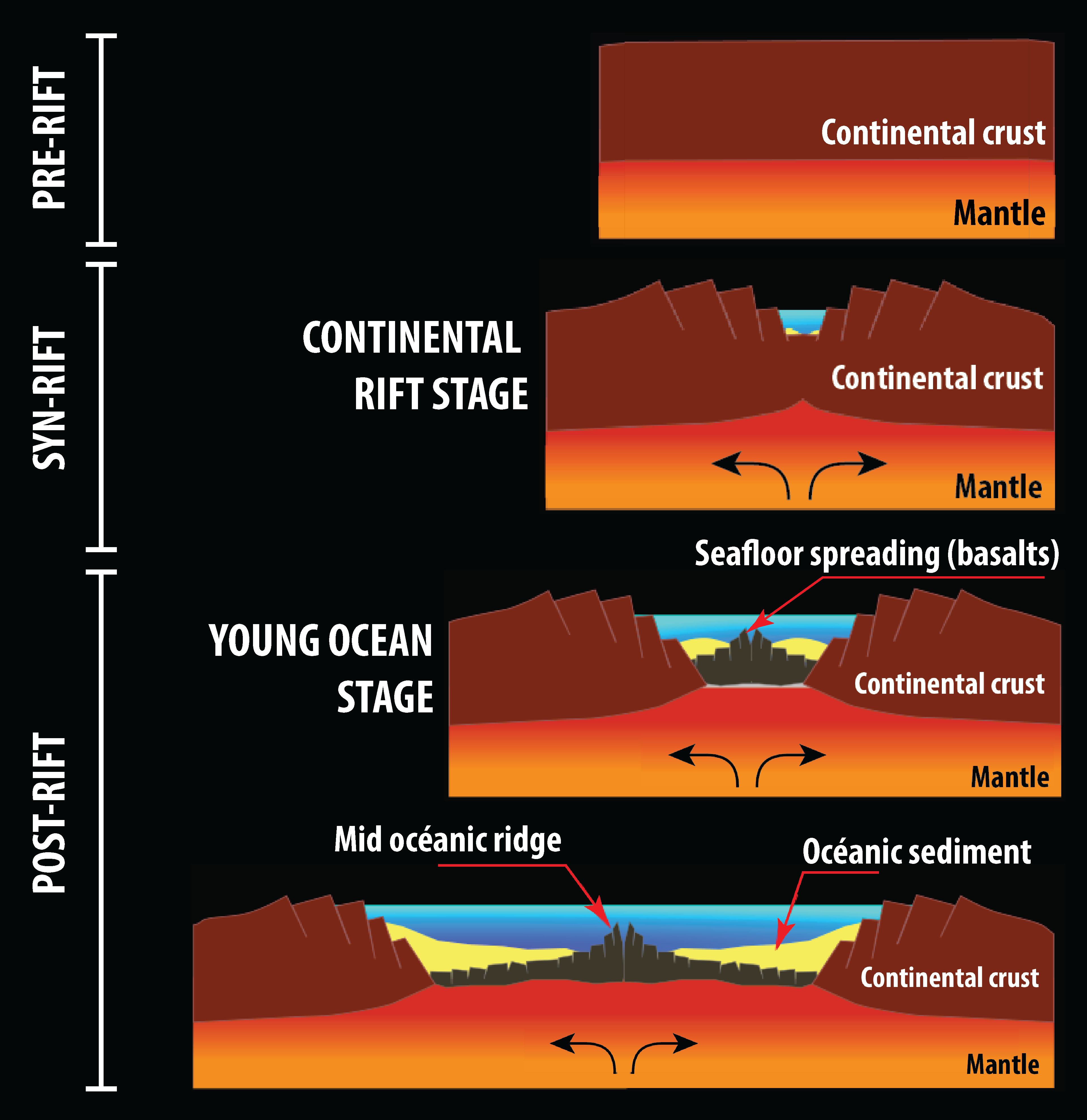Oceanisation on:
[Wikipedia]
[Google]
[Amazon]
 Oceanisation, or oceanization, is the process of formation of an
Oceanisation, or oceanization, is the process of formation of an
 Oceanisation, or oceanization, is the process of formation of an
Oceanisation, or oceanization, is the process of formation of an ocean
The ocean is the body of salt water that covers approximately 70.8% of Earth. The ocean is conventionally divided into large bodies of water, which are also referred to as ''oceans'' (the Pacific, Atlantic, Indian Ocean, Indian, Southern Ocean ...
after continental rifting
In geology, a rift is a linear zone where the lithosphere is being pulled apart and is an example of extensional tectonics. Typical rift features are a central linear Fault (geology), downfaulted depression, called a graben, or more commonly ...
. The oceanisation is marked by the accretion of oceanic basalts between the drifting continental blocks and the incursion of marine waters and species in the rift
In geology, a rift is a linear zone where the lithosphere is being pulled apart and is an example of extensional tectonics. Typical rift features are a central linear downfaulted depression, called a graben, or more commonly a half-graben ...
basin. According to John Frederick Dewey in the 1960s the idea of continental drift was different to that of oceanisation which was "the mysterious metasomatism or transformation of continental crust
Continental crust is the layer of igneous, metamorphic, and sedimentary rocks that forms the geological continents and the areas of shallow seabed close to their shores, known as '' continental shelves''. This layer is sometimes called '' si ...
into oceanic crust
Oceanic crust is the uppermost layer of the oceanic portion of the tectonic plates. It is composed of the upper oceanic crust, with pillow lavas and a dike complex, and the lower oceanic crust, composed of troctolite, gabbro and ultramaf ...
".
References
Geology {{Geology-stub